An Article for Pilates Instructors and Enthusiasts
The rib to pelvis cylinder is the myofascial cylinder that connects and relates the lower rib cage to the pelvis. This group of muscles include the quadratus lumborum, psoas, all 4 layers of the abdominals, latissimus dorsi , breathing diaphragm , pelvic floor as well as the thoracolombar fascia. When the rib cage is aligned over a neutral pelvis these muscles are positioned for optimal performance. Because the spine is the only boney link between the rib cage and the pelvic this group of muscles have the dual role of being both supportive and flexible.
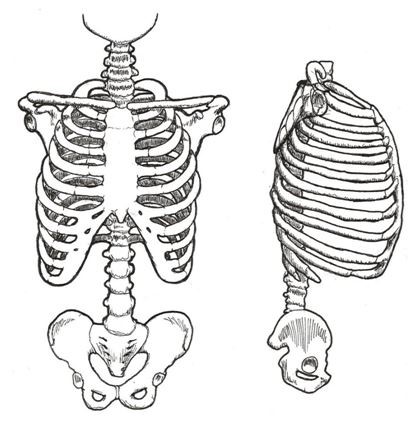
A few weeks ago one of my instructors at my studio Mongoose Bodyworks NYC showed me a wonderful exercise to help reestablish this connection on one side. Let’s call it “Deltiod to Opposite Rib”. Although the repatterining cues are a bit more complex than the name implies it allows ( for me at least) an easy way to remember it.
Let’s imagine that it is the left side (lower rib cage to pelvis) that you are concerned with. Perhaps you have noticed a lack of “connection” or you suspect a tight or inhibited psoas on this side.
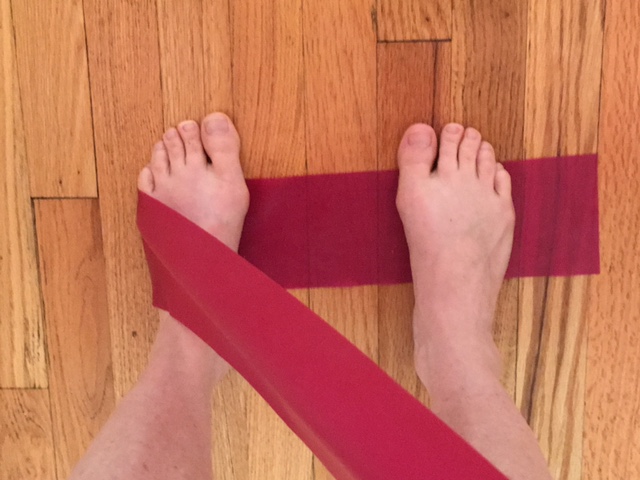
Place a light exercise band on the floor and have your client stand on the right end of it, pinning it to the floor. Then have them pick up the band with their right hand so that the band crosses their body. (Picture is bird’s eye view)
Their right arm should be straight and slightly abducted to start. The action of this exercise is simply to abduct the arm no farther than 90 degrees ( shoulder height) against the tension of the band and return. Without instructions the tendency will be to slightly side bend the spine to the left. However , our goal is to cue the student to not side bend but to support the left side isometrically. This will kick on the obliques as well. Let’s back up a moment and talk about the left side. What you are looking for is any disconnection between the pelvis and lower ribs.
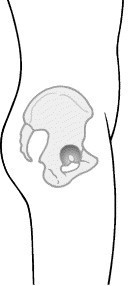
Look to see that the pelvis is neutral and that the ribs are not flared. If the upper fibers of the psoas are tight you will see some extension is the thoracolombar junction or right below. If you see this, place your hand on this area and have them breath into your hand and soften and widen the ribs in the front.
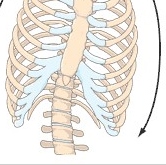
Also stand behind your client and check for symmetry through the area. If the ribs are even slightly translated to one side try, adjust this before lifting the arm.
Once you’ve help facilitate a centered torso you’ll want to prepare them to stabilize the left side . Cues like ” energy down through the inner leg” , “width and strength through the low rib cage” will prepare their stabilizing muscles.
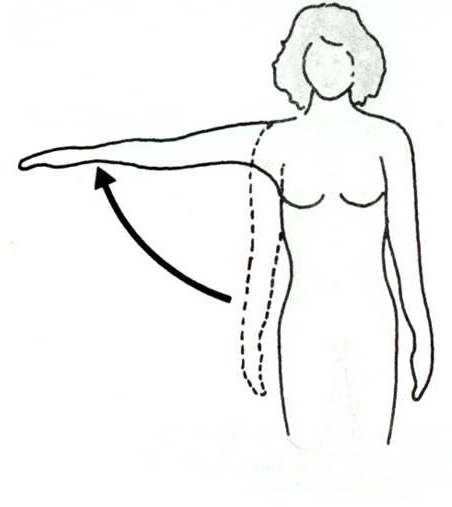
Now you are ready to abduct the right arm. Cue them to maintain the left side as the right arm upwardly rotates against the tension of the band.
Mongoose Bodyworks is a boutique Pilates studio in Soho NYC that focuses on delivering customized private sessions designed for your exact needs.
Halle Clarke NCPT is a 2nd generation master teacher having studied closely with two of the great NYC protégés of Joseph Pilates: Kathy Grant and Romana Krysanowska. Halle opened Mongoose Bodyworks, a boutique Pilates Studio that offers personalized Pilates sessions in New York City in 1999.
As well as training in Pilates Halle has pursued studies in ideokensiology, anatomy, biomechanics, muscle energy technique, trigger point therapy, neuromuscular re-patterning, Alexander technique, The Feldenkrais Method, Polarity therapy and Cranio-Sacral Therapy. She has additional certifications from the PMA-CPT and ACE. Halle integrates all of her extensive studies of the body into her work as a New-York based Pilates Instructor and Teacher Trainer.
She has been conducting Pilates Teacher Trainings for Balanced Body since 2006 both in New York and around the country. Halle has taught Master Pilates classes nationally and internationally, including at The PMA Conference and Mind Body Expo.


